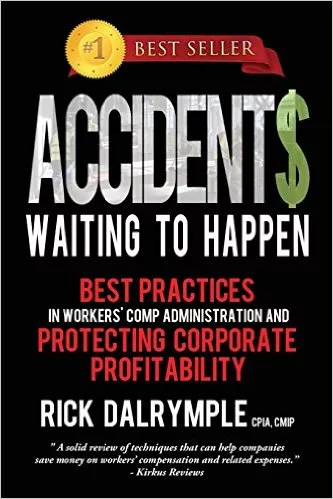Avoiding Financial Surprises
Contractors are notorious for poor paperwork and not taking an interest in accounting. Having good numbers and using the data to make decisions regarding your business can be exciting and eliminate much of your stress. I know accounting and financial information is not always that interesting to contractors and I am not trying to bore you, but each and every month we hear from contractors who are surprised by poor bookkeeping and misleading financial information.
Start by making sure your accounting is set up in a format that makes sense for a contractor. Most contractors let the accountant set up records for the IRS or just haphazardly pick a chart of accounts. Your accounts should be tabulated into a format that matches how you estimate. In addition to sales, you only really need two categories — overhead and direct costs. There are six types of accounts within those two main categories. You can make as many subcategory accounts as you need, but they still fall within these six types.
These categories are:
Sales:This is all incoming revenue. Again, you can have multiple sales accounts.
Direct costs:Direct costs are those costs which are part of the job that stays with the customer and are direct expenses in creating the job. There are four types of direct costs:
1. Field labor:This includes only wages for hands-on field employees who are installing the work. Under this category, you should have a payroll tax account, a workers’ comp account and benefits account. Whether you pay the money to the employee or the government, it is still a cost of employing the worker, not fixed overhead.
2. Subcontractors: Any subs that take the place of your own labor.
3. Material: Any cost item left directly with the customer and again, you can have many different types of accounts.
4. Special job costs: This includes any one-time expenses to a job such as equipment rental, travel pay, permits, etc. If you did not have the job, you would not have this cost.
Overhead:Any cost that cannot be applied directly to a job. This includes:
1. Variable overhead:These are overhead costs that are directly tied to the work you do and each hour worked requires more of this expense. Frequently, these items of costs are too small and cumbersome to job cost on each job. They include things like gas, small tools, uniforms, etc.
2. Fixed overhead: This includes costs that remain the same regardless of your volume such as rent, truck and vehicle expenses, owner and admin salaries, etc. Yes, if you do less work you may not need as many trucks and you could use a smaller shop, but day-to-day these costs remain the same. Just because you lay off one person does not mean you can stop your rent or truck payment.
Now that we have defined various types of costs, let’s look at some simple areas you should be aware of and monitor.
Cash statements record what goes in and out of the bank but do not include bills that have not been paid or any accounts receivable. Many accountants use cash statements to do contractor taxes as they can lower your tax bill by pushing receivables into the next year and not recording them as part of sales. However, cash accounting can be almost useless when looking at monthly profit or loss statements. Worse yet, cash statements can create a false reading for actual profit or loss. We recently worked with a customer whose cash statement showed a year-to-date profit but an accrual statement showed a $200,000 loss.
For profit analysis, always use accrual statements. Literally, all you have to do is select the cash or accrual option in your accounting software, click on it and it will give you statements in either format.
Accrual statements are extremely valuable when interrupting what is wrong with your company. For example, suppose that field labor tends to run 25 percent of your total cost and this month’s statement shows it as 50 percent of total cost. More than likely this means you have a job that was completed but not billed or a job that lost a lot of money. But it could also point to other issues. Maybe your guys are cheating on their time cards, or there might be a theft situation, or possibly something was not billed. The list goes on and on. However, this labor change is an alarm that must be investigated.
Look at your statements each and every month to see what cost factors have changed but look at changes of cost as related to a percentage of sales, not just changes from account type to account type.
For example, if you ran a statement that compared accounts to accounts, it might look like Figure 1.
But wait a minute, last year you did $100,000 with $25,000 in labor and now you are doing $50,000 with that same $25,000 of labor. Your installation labor percentage used to be 25 percent of sales, or 25 cents for every dollar in sales; now for every dollar in sales it cost you 50 cents to install. Your actual cost of labor has doubled. You either have not billed something, lost a lot of money on some jobs or need to lay some people off.
A statement comparing costs to a percentage of sales would look like Figure 2.
All of this might seem confusing and you may say why bother. Here is the problem: You can look at the bottom line or an account and everything looks OK. However, you might be looking at the wrong thing or using an improper format, and down the road you could be in for a huge surprise.
Finances are in a constant flux and can rapidly change for most contractors. We encourage you to review financial information each and every month. That should include:
• A monthly and yearly profit and loss statement for this year and last year.
• A balance sheet for this year and last year.
• An aging report of accounts receivable.
• An aging report of accounts payable.
• A backlog of work as compared to last year.
• Your labor and install expense percentages as compared to last year.
• Your gross profit as compared to last year.
• Your overhead as compared to last year.
• Your net profit and salary as compared to last year.
Looking at financial data is pretty easy if you follow the basics and it is recorded in a useful format. I am not going to tell you that good financial records will ensure you do not go broke but I can assure you that you will at least have the option of being out of town when it happens.
Looking for a reprint of this article?
From high-res PDFs to custom plaques, order your copy today!






